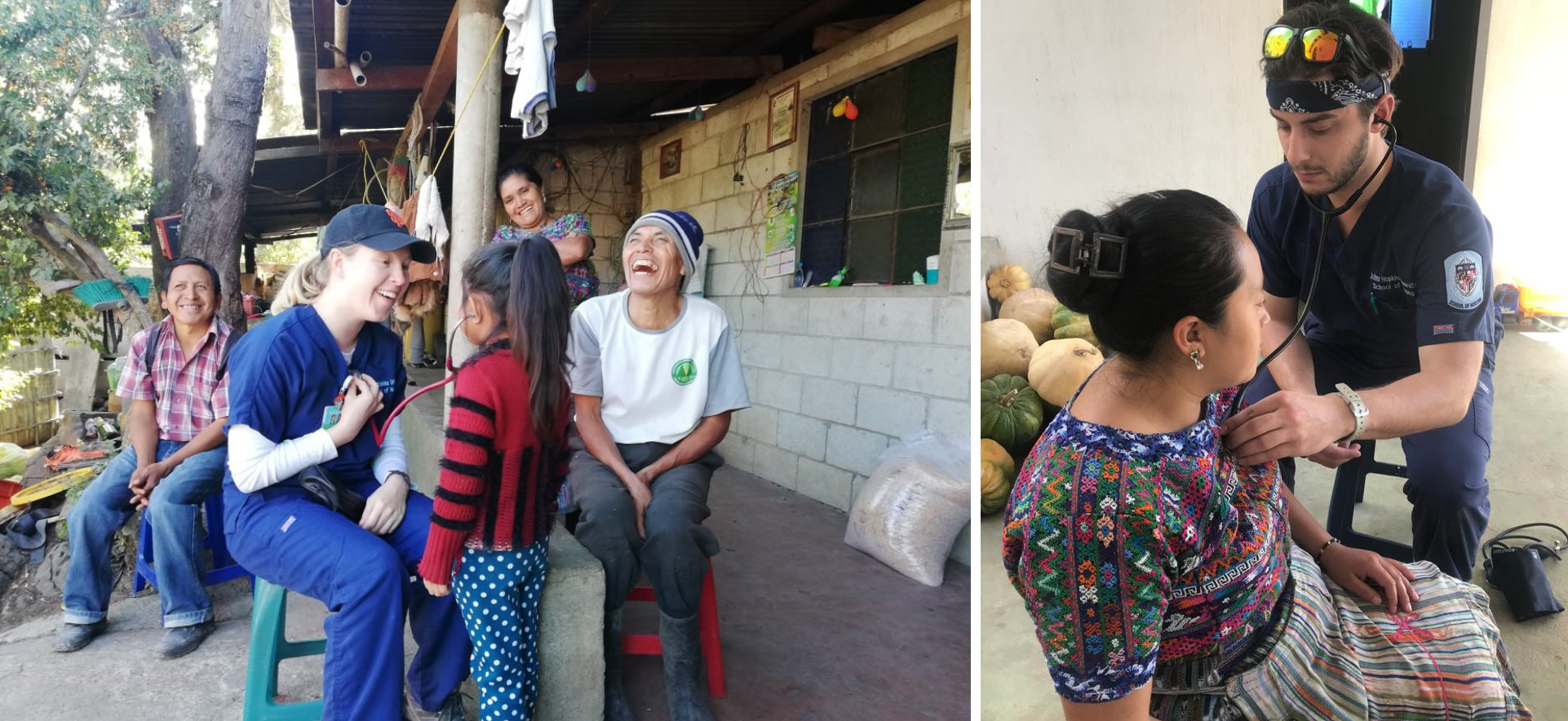Crying and pooping,
feeding and sleeping. Babies
aren’t scary, are they?
For many of my classmates, this semester was a long time coming, because now is the time for our OB and our Pediatric clinical rotations. Many students have been eagerly awaiting the time when they can hold a baby or see a birth for the first time, but me? Scared to death of babies. It sounds funny to actually admit that, especially since I worked as a doula this summer (like my fellow blogger Meg), so I’m comfortable with the birthing process. But after the baby is born? And the little human is here? Yikes.
That being said, I wasn’t really looking forward to this set of clinical rotations. First up is peds, and I didn’t think that I would like it at all. Something interesting happened last week though, and I’ve been thinking about it ever since.
I had the chance to shadow and observe a neonatal intensive care unit (NICU), and wow. It was amazing. I’ve never spent much time around babies, and what little time I have spent with them has always been awkward for me. I would always worry about if I was holding them correctly, why they were crying, why they were making that face, and oh man, are they pooping again? And babies can sense this fear. They always seem to sense the mood of whoever is holding them, and they tend to respond in kind. Imagine my surprise when my instructor, the Unsinkable AQ, told me and a classmate, “You’re going to the NICU today.”
The NICU is a special place, where the smallest babies go to receive some extra care and attention while they continue growing and developing. Normal gestation time for a full-term infant is 37-38 weeks with a maximum time around 40 or 41 weeks. Babies in the NICU are born as early as 25 weeks gestation, and they weigh 1.5 pounds or less. Premature babies have a long road ahead of them in terms of development, and many premature babies are plagued with chronic health problems for the rest of their lives, particularly respiratory problems.
When we got to the NICU, I changed into new scrubs and then I had to scrub-in. Scrubbing-in looks a lot like what you see in TV shows or movies; you get the little sponge that looks like a bar of soap, lather up to your elbows and wash one arm at a time for a total of three minutes. It kind of felt like a spa treatment, actually! My instructor led us onto the unit and introduced us to some of the nurses and walked us around and told us about some of the babies that were there.
I wasn’t prepared for what I saw. The infants there are just so tiny and fragile looking, nestled into their little womb-like nests. The nurses create these in order to simulate the environment that the babies are used to in the womb. The nurses there are fiercely protective of their little patients, guarding them and protecting them from the outside world so that they can continue to rest and grow.
The nurses on the unit were AMAZING. They were very receptive to my questions, and they were phenomenal teachers. I saw some amazing, delicate procedures. One of the nurse practitioners on the unit inserted an umbilical central line into one of the little guys, which is quite intricate. She first had to gently pry open the arteries and veins in the stump that was left over from when the umbilical cord was cut, and then she had to thread the catheters up to the heart. It was so intense!
The interesting thing that I noticed was how the babies seemed to sense the presence of someone standing nearby, and I observed this in a really cool way. All of the babies are attached to monitors to keep track of vital signs: their pulse, respiratory rate, and their oxygen saturation (pulse ox). The machines are set with alarms to indicate distress, which could be a respiratory rate of more than 60 breaths/min, a pulse of more than 200/min, or a pulse ox of less than 90. These alarms went off a lot, and it was usually only a few seconds until the vitals went back to their normal limits. If the alarm didn’t turn off right away, the nurses were right there to assess the baby, to reposition the baby, to adjust the oxygen rate, or do whatever the baby needed.
On a few occasions, the nurses had their hands full, so I would go to look at the baby to see if I could see what the problem was. A few times, as soon as I walked over to the baby, the vitals would return to normal. Seeing that everything looked ok, I would walk away to see if there was anything else that I could do to be helpful. As soon as I walked away, the vitals would drop again, so I would go back over and stand near the baby. The vitals went up. I walked away again…and once again, the vitals dropped. So I went back to the crib again and stayed longer, for about 5 minutes, and I just stood there looking at the little one, watching him/her breathe. The longer I stood there, the vitals improved.
It was really interesting. I tested this theory with a few other babies, and the same thing happened. I don’t know if it was a fluke or if it was an actual, therapeutic intervention, but I started to think about whether or not this has been studied before; is continuous bedside presence beneficial to premature infants? I’m not sure, but I think it would be interesting to look into.
My day overall was really great, and I developed a new found appreciation for the NICU. I never in a million years would have ever considered working there before, but now I’m definitely more open to the possibility. It would certainly be nice to see if I really AM a baby whisperer!
 Global Service Learning: Guatemala
Global Service Learning: Guatemala Guatemala Re-visited: Rainwater Project Shows Value of Service-learning Trips
Guatemala Re-visited: Rainwater Project Shows Value of Service-learning Trips You’re Welcome
You’re Welcome My First Teachers in Nursing School Weren’t Nurses
My First Teachers in Nursing School Weren’t Nurses Awards for Diversity
Awards for Diversity






